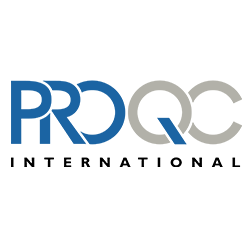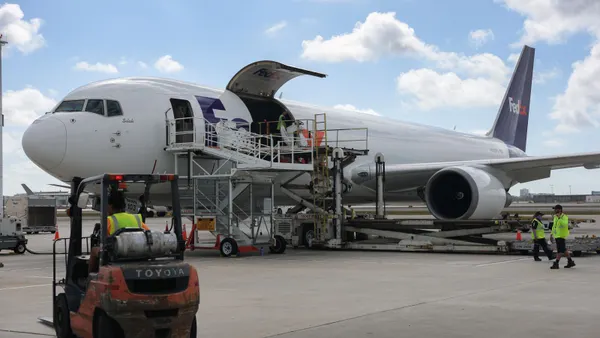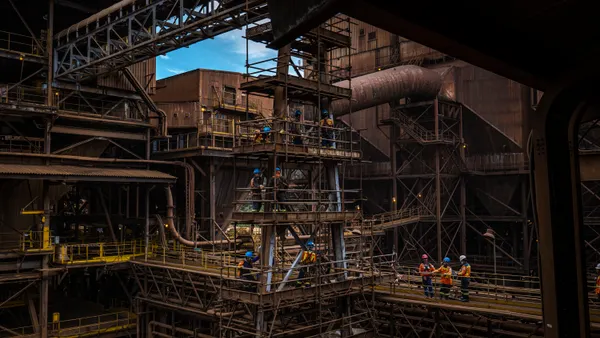Dive Brief:
- Just as Typhoon Hato ravaged South China, supply chain managers with links to the U.S. Gulf Coast likely received another risk alert: Hurricane Harvey intensified to a Category 3 storm, and could strike Texas this weekend.
- The two storms show the disruptive effects hurricanes can have on supply chains — and livelihoods — should they make landfall. "Airports in Hong Kong and Shenzhen were closed, many forwarders were forced out of office, and ocean services were suspended" by Typhoon Hato, according to a Freightos alert.
- Harvey may strengthen to a Category 4 storm and make landfall as early as Friday night, according to The Weather Channel. The Washington Post reports the storm may become an "epic flood catastrophe" in Texas, with the New York Times citing wind speeds at up to 110 mph.
Dive Insight:
The two devastating storms show the varied effects hurricanes can have on supply chains, as transportation modes and production facilities suffer the natural disaster.
Of the two, however, Typhoon Hato may have the larger impact. "In terms of its intensity, it was certainly a storm of the decade," Neel Jones Shah, senior vice president and global head of airfreight at Flexport, told Supply Chain Dive. "Probably one of the worst that Hong Kong's had in the last 15 years."
That's an issue for supply chains due to Hong Kong's pivotal role in the air cargo market. China is a major world producer, and much of that production is based around the Pearl River Delta. According to Shah, all of that production typically makes its way to Hong Kong, or the port of Shenzhen, to then fly out.
As a result, Hong Kong is one of the most critical airports in the region. "In Europe, if you were to have an event in Amsterdam, well cargo could still flow through Frankfurt or Brussels or Paris, and you're a short truck ride away," he said. "When Hong Kong shuts down, there's nowhere else for you to go."
"The impact of this kind of a storm is that for the next several days you're going to have a very hectic situation from an air cargo [perspective] as the airlines catch up," Shah said. The situation is further aggravated by the fact airplanes are currently full, given a robust air cargo market and the start of peak season, and have no excess capacity to leverage for such events.
While still an extreme weather event, however, Hurricane Harvey would have a different effect on supply chains. "I think the effects will be localized. I don't think you're going to see much impact from an air cargo perspective," Shah said.
The reason is that, unlike Hong Kong, Houston is nearby a network of other airports and sea ports, and connected by an extensive road network, so shippers could avoid calling in hurricane-affected areas. "In Houston, it's well connected to the rest of the country by road, so I don't think they will face too many shortages of anything critical," he said.
Nonetheless, previous experiences suggest flooding could lead to serious delays if forecasts match reality. The Weather Channel reports Harvey may be the first Category 3 storm to make landfall to the U.S. in 12 years and could be the strongest storm to hit Texas in 47 years. In addition to transportation modes, facilities in the region must prepare for flooding to affect their buildings and warehouses and for staff shortages as evacuations continue.
The best preparation, according to Shah, is a good natural disaster plan and proactive communication with supply chain partners. "As you recover, you can truly gauge what the impact is on your business," but communication is 95% of the battle, in Shah's experience.
Hato and Harvey, as intense storms, serve as reminders of the natural threats faced by supply chains. Fortunately, August still leaves companies plenty of time to make adjustments to their supply plans due to the storm's disruptions. "Some customers who may end up getting a two- or three-day delay as a result of Hato may want to upgrade their shipment, [or] may want to pay a premium so that they're first in line to get on an airplane," Shah said.
If these two storms are an indicator of the hurricane season to come, however, supply chain managers should begin planning for more damaging disruptions later in the year when supply is constrained due to an intensified and prolonged peak season. "If this were happening in mid-November, I would say you have a lot of customers who are lining up to pay express rates because this may be their last chance to fill their products," he added.














